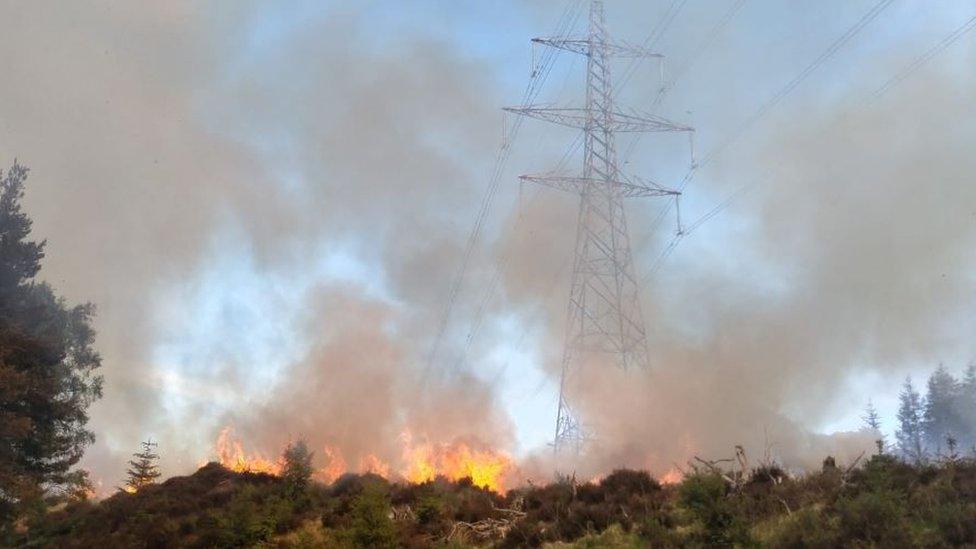Scotland wildfires: Smoke from flames could be seen from space
- Published
- comments

The wildfire has been burning since last week
Firefighters in Scotland have been dealing with what could be the biggest wildfire ever recorded in the UK.
The flames from the fire caused a 20km long plume of smoke, which was picked up by a Nasa satellite in space.
Crews of firefighters have been at the scene since Sunday, and the wildfire is now under control.
Due to recent warm and dry weather, and the difficult terrain in the highlands, the fire was difficult for the fire services to manage.
Where did the fire happen?
This picture was taken by a Nasa satellite, and shows a large area of smoke moving towards Loch Ness in Scotland. Look in the centre of the picture - can you spot it?
The fire burned through a large area of woodland and scrub in the Scottish Highlands, near Cannich.
Scrub is an area of land with lots of bushes and grass, that can easily get quite dry.
It spread for around 80 square kilometres, and produced a huge plume of smoke - which is the word for a large smoke cloud - which could be seen all the way from space.
As well as this fire, there were four separate wildfires in the same area in the past week.
RSPB Scotland said the fire spread to Corrimony Nature Reserve, and that birch trees and heather moorlands were damaged in the area.
This creates a risk to animals in the area, such as birds and frogs, which need the plants to survive.
What caused the fire?
Local firefighters took this photo, showing the flames and thick smoke
There's not a clear cause of the fire so far, but Forestry and Land Scotland, who look after areas like this, say they think it could have been caused by people camping.
It said that most events like this are started by accident, and that people did not realise how quickly leftovers from a campfire, or a dropped cigarette, could turn into a large wildfire.
What will the impact be?
Although a fire might look like its out, all it would take would be one small lit ember to be spread by a gust of wind
As well as the impact on local animals and plants due to the destruction of their habitat, there's also risk of greenhouse gases being released into the atmosphere.
When plants and trees burn, they release carbon, which can get into the atmosphere.
In May 2019, a wildfire in Sutherland released around 700,000 tonnes of greenhouse gases into the atmosphere, according to the WWF in Scotland.
Experts are concerned about an increased risk of wildfires due to climate change.
As we experience more extreme weather, heatwaves are more likely, leading to large areas of dried out plants, which can burn very quickly.
Last year, lots of places across Europe experienced increased wildfires due to the rising heat.
- Published29 May 2023
- Published4 August 2022
